Is there anything better than the view from an eightieth-floor apartment? The entire city is laid out at your feet while you sip your coffee, your dog snoozing at your feet. Until your dog decides they need a bathroom break. And the elevator’s on the fritz. Or there isn’t a convenient park nearby. Having dog grass pads available solves the problem without obscuring that gorgeous view.
The Urban Canine
More and more dogs are finding their way into cities. Retail developers have recognized the importance of that human-animal bond, and it’s now common to see pet-friendly apartments and condos. When such complexes go up near parks or wooded areas, walking your dog isn’t a problem. You get a place to jog or bike, and your dog can join in on the exercise.
But what about the truly urban canine? Downtown areas don’t always have grassy verges. That’s where dog grass pads come into play, particularly when you live on those upper floors. Triple digits make for LONG trips in the elevator. Dog grass pads offer a closer alternative, bringing a touch of green as close as your terrace or balcony.
Why Use Dog Grass Pads?
Dog grass pads come in squares or rectangles, and they sit on sturdy bases. You can order them in various sizes to suit your particular breed of dog. The easy portability means your dog doesn’t have to leave your apartment to make that crucial potty break.
Think of them as a more “natural” alternative to puppy training pads.
Dog grass pads work great for a variety of situations:
- Tiny Paws: Small breed dogs HATE freezing weather. In cities, ice and snow gather on the sidewalks. Dog grass pads provide a nice touch of green without that horrible slush in the way.
- Puppies: You can use dog grass pads as part of your potty-training process. They transition your youngster from the pad to the lawn. Better yet, you can use them while your puppy’s waiting for their vaccine protocol to finish, protecting them from other dogs out in the park.
- Recovery: Dogs recovering from surgical procedures aren’t wild about stairs. Careful guidance to dog grass pads goes a lot smoother. Then your surgical patient can return to their bed for that much-needed rest.
- Seniors: Along those same lines, your older dog may not be up to lengthy trips to the park. Rather than working those aching bones multiple times a day, dog grass pads allow them to use the bathroom and save their energy for a single walk.
Real vs. Synthetic
You have two options when it comes to dog grass pads: real grass and synthetic grass. If you’re starting with a puppy, they won’t have a preference either way. Older dogs may require some time to adjust to synthetic grass if they move from country living to the city. Both dog grass pads have their pros and cons, summarized in the table below:
| Dog Grass Pad Type | Pros | Cons |
| Real | Disposable, Environmentally-Friendly, Little Maintenance | Expensive, Not Reusable Grass, Dies in Severe Weather |
| Synthetic |
Reusable, Long-Lasting, Less Expensive |
More Maintenance, Not Disposable, May Confuse Older Dogs |
Considerations for Dog Grass Pads
Bringing dog grass pads into your apartment can solve a lot of problems. If you work long hours, they provide your dog with somewhere to go without making a mess. You won’t need to worry about finding a dog walker to navigate the busy city sidewalks. And when the weather turns foul and nasty, your dog will stay safe and warm.
You still need to keep a few things in mind before investing in a dog grass pad, though:
- Does your complex allow pets to “go” on the balcony, or is there a policy forbidding it? Double-check before you set up those dog grass pads.
- Is your terrace level? The last thing you want is for urine to flow out of the tray into your apartment. Or WORSE, down to the balcony below. (Not the best way to introduce yourself)
- How private is your dog? Are there a lot of prying eyes around the proposed site for your dog grass pads? You may want to consider setting up a privacy screen to keep your dog comfortable.
- How many dog grass pads do you need? The standard size is around 15″x20″ – which works for a small dog. If you have larger dogs, you’ll need to get more to provide maximum comfort.
Best Dog Grass Pads
You shouldn’t feel guilty about taking in that incredible view from your apartment. Plenty of dogs adapt to life in the city. That might mean jaunting around in style under an umbrella dog leash or relaxing in their dog carrier bag during your business lunch. Dog grass pads give them a little comfort of the natural world in their new steel jungle. So sip your coffee and let them flop in their cozy dog bed. We’ll find you a dog grass pad that’ll work for your apartment.
Best Real Dog Grass Pads
Real dog grass pads come from hydroponic growth. Hydroponically grown plants develop in water without the use of soil. So you don’t need to worry your dog’s going to track mud or dirt through the apartment after using their dog grass pad. The tight root structure is what absorbs the urine and odor. You need to collect any solids right away, but otherwise, the pad does the work. As soon as the grass starts to die, throw the dog grass pad away and order a new one.
Due to the hydroponic conditions, real dog grass pads don’t like winter. You may see them die faster in icy weather. Consider keeping them out of the snow if you want to get the most life out of them. The other downside to real dog grass pads is the expense. You have to buy replacements, and – depending on the size of your dog – that can add up quickly.
Doggie Lawn provides a tray of real grass in a convenient size of 20″x24″. The grass sits inside of a cardboard tray that prevents any urine from leaking to the outside. Simply pull the lid off (and recycle it), and plop the dog grass pad where you want it to go. Easy as pie! The grass lasts an average of 2-4 weeks before needing replacement. People noted if you do some light watering, you might get some extra life from your “lawn.”
Downsides? As this is a real dog grass pad, you risk getting patches of lawn that don’t survive the shipping process. Also, some people noted the lawn attracted insects, so be careful where you set up your dog grass pad.
The Good
- 20"x24" dog grass pad
- Recyclable cardboard tray
- Lasts an average of 2-4 weeks
The Bad
- Some lawn patches may not survive shipping
- May attract insects
Fresh Patch also uses a cardboard tray to hold their real dog grass pad, though in a slightly smaller size: 16″x24″. In comparison, their tray weighs a pound less than Doggie Lawn, coming in at 9 pounds rather than 10 pounds. The natural grass attracts your dog to the appropriate spot, and the tight roots quickly absorb the urine and odors. You get the same average of 2-4 weeks between replacements. Again, if you’re up to some watering, you can extend that time a
The downsides? Some people noted this dog grass pad tempted their dogs to dig a little more, and the cardboard didn’t hold up against the assault. There was also a slight chance of fungus spores hitching a ride in the grass, so check your dog grass pads closely upon arrival.
The Good
- 16"x24" dog grass pad
- Recyclable cardboard tray
- Lasts an average of 2-4 weeks
The Bad
- May tempt dogs to dig
- Risk of fungus spores
Best Synthetic Dog Grass Pads
Synthetic dog grass pads feature plastic designed to look like grass. Liquids pass through, collecting in a tray beneath the patch of “grass.” You’ll want to clean that tray every day to prevent a build-up of odors and bacteria. Alternatively, place a puppy training pad in the tray to toss each day (though this creates A LOT of waste in landfills). Synthetic dog grass pads require that extra bit of maintenance in routine cleaning with warm water and a mild detergent to keep the plastic clean. On the plus side, that careful attention means you’ll have a dog grass pad for several years rather than needing to call for monthly replacements.
Downtown Pet Supply keeps its dog grass pad efficient and straightforward. The 20″x25″ base features sturdy grips to hold the entire pad in place. The synthetic grass top simulates real grass while maintaining a low profile. Liquids pass through to a tray in the base that you can easily remove for cleaning. Odors don’t embed into the top, keeping your balcony smelling fresh.
Downsides? There is only that one size available, which may not work for dogs on the larger size. And there’s a pronounced, unpleasant chemical smell when you first open the box. Give it a chance to settle before you use it.
The Good
- 20"x25" dog grass pad
- Odors don't embed into grass top
- Base removes for easy cleaning
The Bad
- Only available in one size
- Strong initial chemical odor
Pet Maker employs three levels to their dog grass pad to allow for easy use and cleaning. The bottom layer has a durable grip that keeps the pad in place, preventing unhealthy sliding when your dog steps onto it. The middle layer features the removable tray for easy cleaning. The top layer sports the artificial grass for your dog, with concealed holes for the liquid to pass through. Built-in odor resistance keeps the smells to a minimum.
The downsides? You DO need to attend to the tray as soon as your dog uses the facilities. Otherwise, smells WILL build up. The “grass” comes apart if your dog digs at it, so be careful with energetic pups. And this dog grass pad only comes in one size, which may be too small for larger dogs.
The Good
- 3-layer dog grass pad
- Built-in odor resistance
- Durable grips on bottom layer
The Bad
- Only available in one size
- Need to clean immediately to prevent odors
- Not good for diggers
If you want to find the best size dog grass pad for your needs, PetZen Garden provides the perfect option. Their synthetic dog grass pads come in various sizes that you can cut down with a box cutter to adjust to your balcony. The artificial grass is composed of UV-resistant polyethylene and polypropylene to retain its color against the sun and urine. Holes hidden with the “grass” allow liquids to pass through without a problem. Everything hoses down for easy cleaning.
So what are the downsides? This particular dog grass pad doesn’t come with a tray – you’ll have to buy one. People also noted the “grass” shedding at times, so go easy with the hose. And there’s a strong chemical odor when you first unbox the pad. Let it sit out before you try introducing your dog to their new dog grass pad.
The Good
- Range of sizes available
- UV-resistant polyethylene and polypropylene
- Hoses down for easy cleaning
The Bad
- No tray included
- Grass can shed
- Strong initial chemical odor
If you want to choose from a variety of sizes for your dog grass pad, PetSafe comes in three: 17″x21″, 24″x24″, and 33″x33″ (the largest out there!). Their collection tray sports an innovative angle in the base, ensuring the liquids flow down and away from the synthetic grass on the top. Every purchase includes a sample of their Wee Sponge, a pad that absorbs and converts liquids into solids, making them easier to dispose of. The Sponge fits perfectly into the collection tray (though you have to buy them separately).
Downsides? This dog grass pad runs a little more expensive than the others. It’s also a higher step-up than most, which may not work for dogs with shorter legs or arthritis. And while you get a variety of sizes, the base may not hold up to the increased weight if your dog’s on the heavier side.
The Good
- 3 available sizes
- Angled base keeps liquids flowing away from top
- Includes Wee Sponge to absorb and convert liquids
The Bad
- Expensive
- Higher step up
Pups in the City
Urban expansion and a better understanding of the human-animal bond find more and more canines embracing city life. Dog grass pads ensure those urban pups can enjoy their balcony views without a fuss. A quick jaunt to the terrace, and they’re set for their day. You don’t need to fret over broken elevators or a lack of a nearby park.
So check in with your property manager and make sure your balcony doesn’t tip to the side. Then show your dog you’re thinking of them and provide them with a little spot of green that’s all their own. They’ll appreciate the thought – and not having to climb all those stairs!

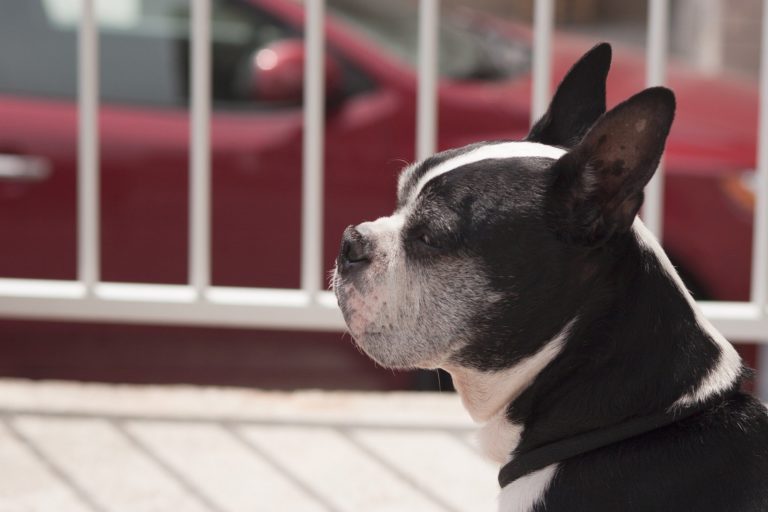
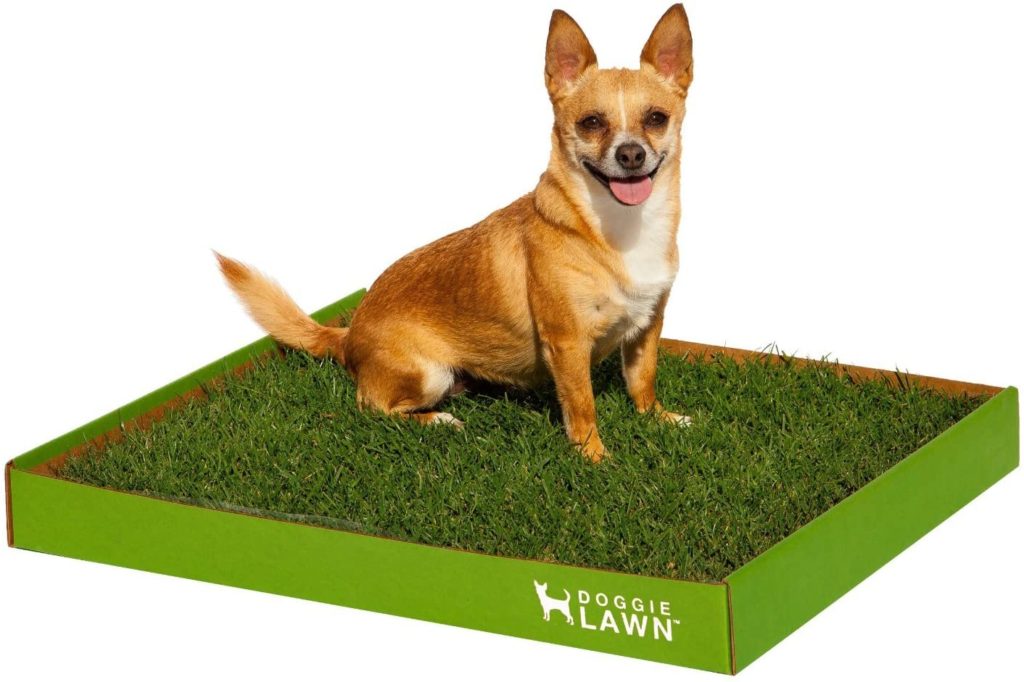
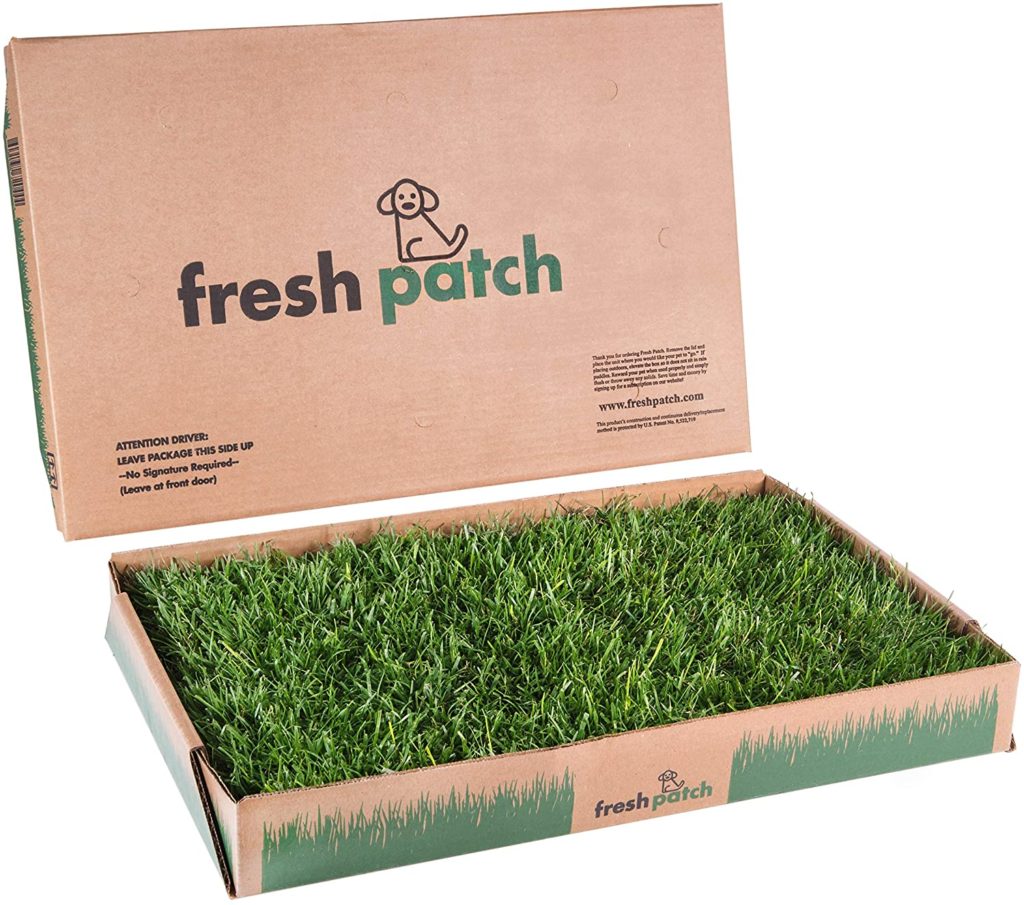
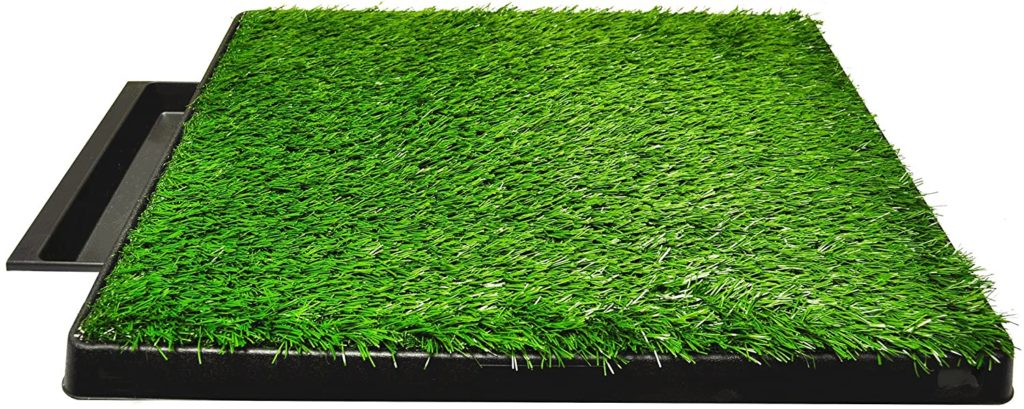
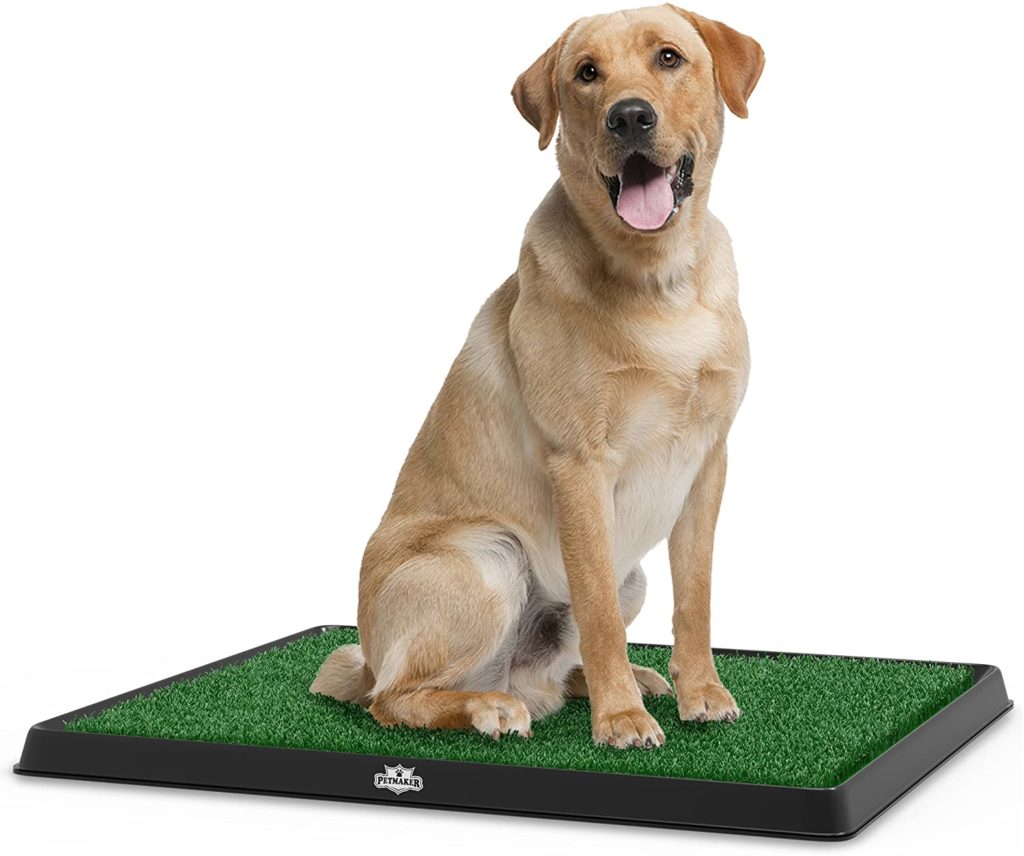
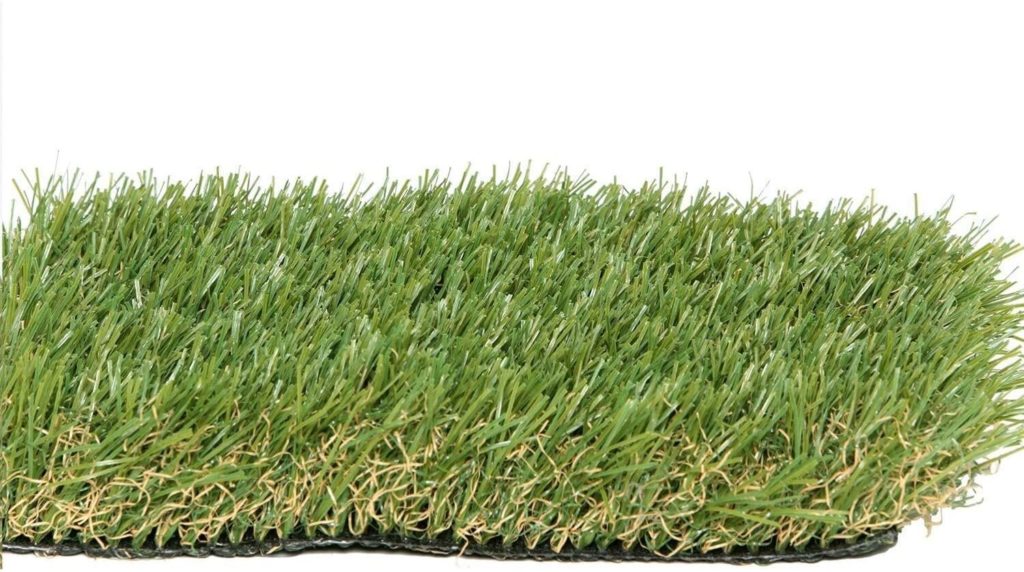
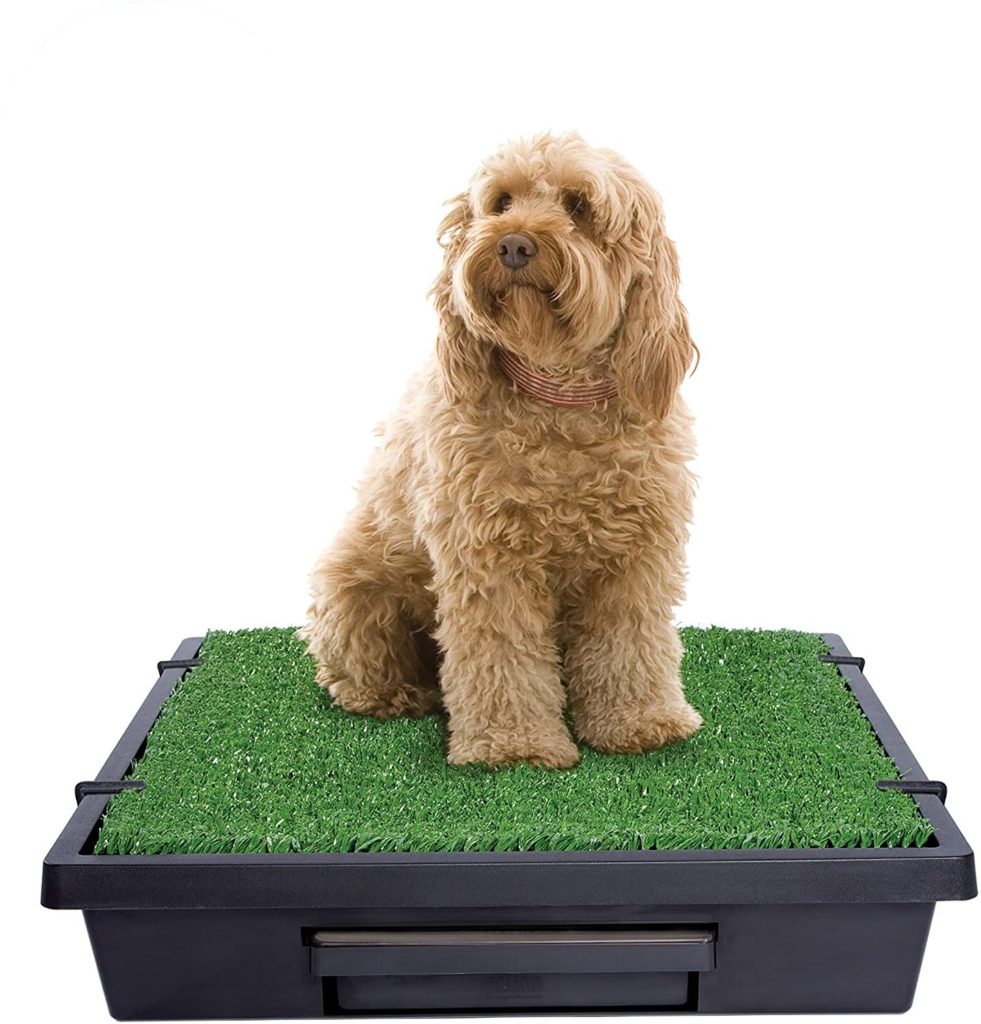




No comment yet, add your voice below!